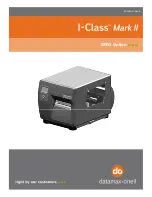
11
Installing Your AMS
This section describes the procedures you need to perform to install your AMS system and get it ready for use. For
best results, perform the procedures in the order they are presented in this chapter:
•
Installing the AMS software
•
Installing the wireless link on the USB port
•
Checking communications between the link and the AMS
•
Registering your AMS
•
Running the MultiView application
Installing
your AMS
Caution
Dropping the AMS or hitting it against a hard object can bend, break, or chip the housing; damage the internal
components; or knock the AMS out of calibration. While it is not as fragile as an actual silicon wafer, handle the
AMS with care, as you would any precision instrument. If the AMS is damaged or in need of calibration, see the
“Maintaining Your AMS” section.
Caution
The AMS is thicker than a standard silicon wafer so use extreme care to assure that the wafer has proper
clearances when being transported through the tool. For example, when you use the device in a tool for the
first time, move the AMS through the tool in manual mode, visually verifying all clearances. Even when
clearances are sufficient for safe AMS pass-through, if the robot end-effector is taught too high, you risk
crashing and damaging the AMS.
Do not direct compressed air or gas into the humidity sensors on the AMS. Damage to the unit may result.












































